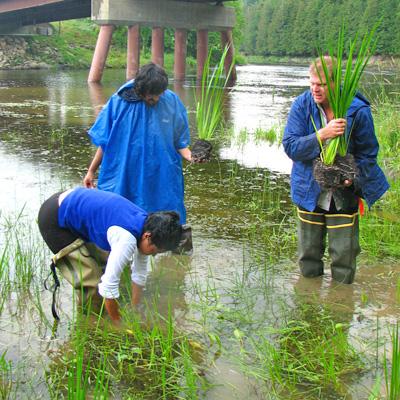Guidelines for Incorporating Biocultural Diversity into Northern Forest Resources Management

Natural resource-dependent communities in the Northern Forest are affected by converging challenges of economic crisis, increasing energy demands, and climate change. Ensuring access and sustainable use of natural resources will make these communities and ecosystems more responsive to such large-scale changes. Findings of previous NSRC research in Maine indicate that Native American gatherers have experienced significant decreases in access to culturally important plant species. Indigenous gatherers are often not included in planning processes for natural resources vital to their livelihoods and identity. Simultaneously, the plants that they gather are not typically considered in forest management.
NSRC researchers conducted interviews, engaged in community meetings, and observed gatherers in the field to collect socio-cultural and ecological information about plant use, habitat requirements, and gatherers’ stewardship practices. Botanical field work and herbarium research provided additional insights into one key species, muskrat root.
Researchers found that Maliseet and Mi'kmaq gatherers in northern Maine currently collect at least 50 species of plants and fungi from a variety of habitats. They employ stewardship techniques at scales from individual plants to plant communities. Synthesizing socio-cultural and ecological information about plant species revealed previously unrecognized resource management priorities and options. These findings emphasized that conservation of biological diversity is directly linked to conservation of cultural diversity. Researchers, indigenous gatherers, and resource managers worked side-by-side to create guidelines for culturally responsive management for four key plant species (muskrat root, goldthread, sweetgrass, and highbush cranberry) that can be replicated for other culturally important species. They also developed curricular material on Native American plant stewardship for high school and college courses.
Download printable version (PDF)
Download full final report (PDF)
Guidelines, curricular material, and the video "Maliseet Stewardship of Plants," produced by Michelle Baumflek, Rocky Bear, and Karim-Aly Kassam (2015), can be found at: http://www2.dnr.cornell.edu/kassam/outcomes.html.
